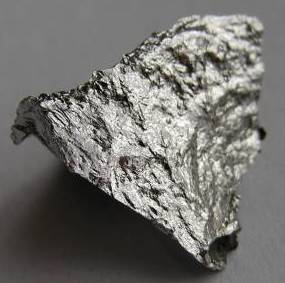 From the tools used to the progress of mining technology, manganese mining has evolved from primitive methods to a highly advanced, technology-based process that allows us to achieve a substantial increase in manganese production. Mining equipment that’s compact, cost-effective and durable over time has made a positive impact on mining efficiency and production. One of the greatest of these benefits is waste and chemicals reduction.
From the tools used to the progress of mining technology, manganese mining has evolved from primitive methods to a highly advanced, technology-based process that allows us to achieve a substantial increase in manganese production. Mining equipment that’s compact, cost-effective and durable over time has made a positive impact on mining efficiency and production. One of the greatest of these benefits is waste and chemicals reduction.
The use of manganese dates back to the Stone Age when manganese dioxide created the pigments used in cave paintings. Later, during Ancient Egyptian and Roman eras, manganese compounds added color to glass. Chemical studies of manganese during the 16th through 19th centuries led to the realization that the addition of manganese to iron ore-based steel made it even harder. In today’s world, manganese is often used for cathodic shielding in the battery industry.
The Basics of Manganese Mining and Processing
While exposure to manganese fumes, dust and compounds should be avoided, in safe formulas manganese is used by most everyone. The fact that manganese is such an important metal in our lives makes it clear that that mining of it is equally important.
What is Manganese Used For?
- Gives steel a hard yet pliable quality
- Forms ferromagnetic alloys
- Depolarizes dry cell batteries
- De-colorizes glass made green by iron impurities
- Powerful oxidizing agent
- Used in some fertilizers and for certain grazing animals
- Found in multivitamin supplements
 Where Does Manganese Mining Occur?
Where Does Manganese Mining Occur?
Manganese is the fifth most abundant metal found in the crust of the earth. Although 80 percent of manganese resources are found in South Africa, manganese is also mined in Australia, China, India, Ukraine, Brazil and Gabon. One of the South African mines along the Northern Cape is Tshipi é Ntle, a new open mine pit located within the Kalahari Manganese Field.
The Manganese Mining Process
More than 25 million tons of manganese are mined every year. Most manganese mining occurs in open pits. Although there are processes in place to mine manganese nodules in the ocean floor, they cannot complete with land-based mining production. Once the ore is mined, it’s transferred to a processing plant for electrolytic processing or smelting.
Prior to the development of advanced technology mining equipment, freeing manganese from open pit rock beds required a lot more manpower and time. But compact mining equipment and its advanced technology allows manganese miners to produce far more of the valuable ore than was possible even a few decades ago.


 Where Does Manganese Mining Occur?
Where Does Manganese Mining Occur?




